1.
Introduction
The Hermite-Hadamard inequalities stand today as a fundamental result in mathematical analysis, originally developed by Charles Hermite and Jacques Hadamard during the late 19th and early 20th centuries, with numerous applications across a wide range of real-world problems. The Hermite-Hadamard inequalities help numerical analysis researchers determine error estimates when using the trapezoidal and midpoint rules for numerical integration. The optimization discipline uses it to analyze and create boundaries for objective functions. The inequality allows researchers in probability and statistics to conduct risk assessments through their mathematical treatment of convex utility functions and risk measures, thereby yielding beneficial findings throughout both domains.
Convex inequalities, particularly the Hermite-Hadamard inequalities, have broad applications in various scientific and practical fields. In economics, they are instrumental in estimating average utility or production costs under convexity assumptions, which are commonly used in modeling consumer preferences and temporal transformation [1]. In a multi-scale spatial-temporal interaction fusion network such as the one used for digital twin-based thermal error compensation in precision machine tools, integral inequalities (most notably Gronwall-type inequalities) are essential for establishing stability and error-bounding properties across temporal scales and interacting spatial components [2]. These inequalities offer valuable analytical frameworks to manage uncertainty, optimize resource allocation, and derive bounds for error estimates [3,4].
The Hermite-Hadamard inequalities state that if φ:[α,β]→R is a convex function on the interval [α,β], then the following inequalities hold [5]:
These inequalities have been explored through various types of generalized convex mappings, including p-convex, s-convex, harmonic convex, Godunova-Levin and h-convex functions, and several other classes exist; see, for example, [6,7,8]. The Hermite-Hadamard inequalities have been generalized in various mathematical settings, each offering new insights and applications. In the fractional calculus framework, integral versions involving Riemann-Liouville and Caputo operators extend classical convexity results to non-integer orders [9]. The quantum calculus version of the inequality utilizes Jackson integrals and q-analogues to formulate inequalities where traditional limits are replaced by discrete difference operators [10,11]. A stochastic extension based on probabilistic metric spaces and random variables provides bounds under convex stochastic dominance assumptions [12]. The fuzzy version explores generalized convexity in fuzzy analysis, employing the Hukuhara differentiability to establish inequalities for fuzzy-valued functions [13]. Meanwhile, for interval-valued mappings, the inequality is reformulated using convexity for interval-valued functions in partial relation [14].
In 2015, the distinguished mathematician S. S. Dragomir [15] introduced a novel formulation of the Hermite-Hadamard inequalities. His work contributed to the advancement of the classical framework of Lebesgue spaces by establishing a refined expression for functions using norm-based terms. This formulation preserved the core structure of the inequality while maintaining convexity, leading to broader applications in analysis.
Let X be a vector space over the field K (either R or C), and let ξ,η∈X with ξ≠η, and ρ∈[1,∞). Then, the following inequality holds:
Our aim is to extend inequality (1.1) in the setting of function spaces with non-standard growth conditions on the exponent. Toward this goal, we first discuss some appropriate literature on variable exponent spaces.
Non-standard growth on exponent functions is the terminology used for applications where the behavior of the exponent's growth in the function is not constant or uniform over the domain, compared to conventional function spaces with fixed exponents. In these applications, the exponent can depend on the point or the area within the domain, and there can be more flexible and general growth patterns. A non-standard growth on the exponent p(x) characterizes these spaces in which the integrability conditions change across the domain regions. The elastic character of variable exponent spaces provides great modeling ability in domains that need to deal with non-homogeneous processes in fluid dynamics [5] and image processing [17], as well as elasticity theory [18] and non-standard PDEs [19].
Non-standard growth sequence spaces (ℓp(⋅)) are function spaces in which the growth of sequences is regulated by a variable exponent or a varying growth function, as opposed to being constant. This comes, originally, from the groundbreaking work of Orlicz [20] who created generalized function spaces during the mid-twentieth century. The work of Orlicz (1932) expanded traditional Lp-spaces by establishing spaces that utilize growth conditions controlled by Young functions, thus enabling additional analysis on nonstandard function spaces. Variable exponent spaces emerged from this important foundational work by providing researchers with new ideas about spaces in which the exponent changes according to location. This extension broadens sequence space theory beyond classical boundaries, yet creates a comprehensive mathematical framework suitable for imaging work, signal analysis, and biological modeling.
Formally, let p={pn} be a sequence of real numbers such that pn>1 for all n. The variable exponent sequence space ℓp(n) is defined as
The norm on ℓp(n) is given by
These spaces have excellent flexibility for real-world usage because of their generalized summability conditions, providing finer control. Research on these spaces has revealed new challenges, as they rely on an underlying nonuniform convex norm structure and do not enjoy the duality relations characteristic of fixed \mathtt{p} -spaces. Much attention has been drawn in recent research to investigating the topological nature of these spaces, especially for both modular sequence spaces and variable exponent Lebesgue spaces. Research on \ell_{\mathtt{p(n)}} -spaces has had a number of important developments. Izuki et al. [21] conducted research on the convergence of variable exponent spaces with an additional focus on sequence transformation properties to advance our understanding of their complex topological and analytical behavior. Rabinovich and Samko [22] analyzed the boundedness and Fredholmness of pseudodifferential operators in variable exponent spaces.
The efforts of different authors have resulted in the extension of a number of function spaces, such as Lebesgue spaces of integrability, Morrey spaces [23], Lorentz spaces [24], Hardy spaces [25], Bergman spaces [26], Orlicz spaces [27], and Zygmund spaces [28], among many others, from their traditional definitions to the variable exponent space context. For instance, boundedness embedding and compactness theories for operators evolved substantially during recent times while gaining diverse functional-space applications across different domains. Cordes [29] introduced the study of compact commutators and bounded pseudo differential operators which formed the essential groundwork for operator theory. The research of Denk et al. [30] added R-boundedness to Fourier multiplier analysis thus revealing fresh perspectives on operator performance within variable domains. Fan [31] studied boundary trace embedding theorems for variable exponent Sobolev spaces to show how variable exponents influence this relationship between embeddings. Mihăilescu and Rădulescu [32] expanded this framework for nonhomogeneous quasilinear eigenvalue problems while continuing research on variable exponent Sobolev spaces. Samko [33] analyzed weighted Hardy and singular operators within Morrey spaces to develop essential analytic methods for bounded operator investigations. Thieme [34] examined spectral bounds in infinite-dimensional systems thereby enabling population dynamics and time-heterogeneous systems applications. Guliyev et al. [35] executed an analysis of maximal and singular integral operator boundedness within variable exponent Morrey spaces through a unified method for generalized Morrey-type spaces. Unal and Aydın [36] recently investigated compact embeddings for weighted variable exponent Sobolev spaces while examining their applications to weighted Laplacians which demonstrated applicability between theoretical findings and practical uses.
Completeness, separability, and compactness are basic concepts in function space theory. These notions are of importance in determining the structure behavior and analytical properties of the spaces, and they form the core in many areas of functional analysis, operator theory, and PDEs. Dorantes-Aldama and Shakhmatov [37] further developed these notions by studying the completeness and compactness in metric spaces, topological groups, and functions spaces, which makes it possible to approach these properties in a much more general context. The researchers built on previous work in the topology of function spaces when Holá and Zsilinszky [38] investigated the completeness standards and related topological properties of the function space graphs, further enhancing the topological exploration of function spaces. Through his research, Rodabaugh [39] developed foundational results using separation axioms with representation theorems and compactness to advance the study of functional spaces in fuzzy set theory. Almira and Luther [40] added to compactness and approximation space theory through their work which explained the application of generalized approximation spaces in numerical analysis and optimization. Carro and Soria [41] introduced weighted Lorentz spaces while investigating their relationships with the Hardy operator to extend knowledge about bounded operators in weighted environments.
Bandaliyev et al. [42] investigated the precompactness and completeness of sets within variable exponent Morrey spaces by utilizing bounded metric measure spaces.
Theorem 1.1. [42] Let (\Omega, \mathtt{ρ}, \mathtt{ν}) be a bounded doubling metric measure space, and let \mathtt{p}(\cdot) \in \mathbf{P}(\Omega, \mathtt{ν}) satisfy 0 < \mathtt{p}_{-} \leq \mathtt{p}_{+} < \infty and \sup_{\mathtt{σ} \in \Omega} \frac{\mathtt{α}(\mathtt{σ})}{\mathtt{p}(\mathtt{σ})} < \frac{1}{\mathtt{p}_{+}} . Assume that a subset \mathbf{Q} of \mathtt{L}^{\mathtt{p}(\cdot), \mathtt{α}(\cdot)}(\Omega) satisfies:
● \mathbf{Q} is bounded in \mathtt{L}^{\mathtt{p}(\cdot), \mathtt{α}(\cdot)}(\Omega) ;
● For some \mathtt{q} \in (0, \mathtt{p}_{-}) ,
Then, \mathbf{Q} is totally bounded in \mathtt{L}^{\mathtt{p}(\cdot), \mathtt{α}(\cdot)}(\Omega) .
Xu et al. [43] investigated the completeness, total boundedness, and separability in Bochner-Lebesgue spaces with variable exponents, extending the classical theory of compactness to the context of these generalized function spaces.
Theorem 1.2. [43] Let \mathtt{p}(\cdot) \in \mathbf{P}\left(\mathtt{R}^{\mathtt{n}}\right) . Suppose that \Omega is a bounded subset of \mathtt{L}^{\mathtt{p}(\cdot)}\left(\mathtt{R}^{\mathtt{n}}, \mathbf{D}\right) . If
● for every \mathtt{κ} > 0, \mathtt{σ} \in \mathtt{R}^{\mathtt{n}} ,
● average continuity holds uniformly,
and
● convergence at infinity holds uniformly,
where \mathbf{B}_\mathtt{α}^{\mathtt{c}} is the complement of \mathbf{B}_\mathtt{α} = \left\{\mathtt{σ} \in \mathtt{R}^{\mathtt{n}}:|\mathtt{σ}| \leq \mathtt{α}\right\} . Then \Omega is a precompact set in \mathtt{L}^{\mathtt{p}(\cdot)}\left(\mathtt{R}^{\mathtt{n}}, \mathbf{D}\right) .
Morrey spaces play a central role in relating algebraic structures to topological space. They provide for the realization of abstract algebraic structures in concrete terms and are vital to numerous applications across homology and homotopy theory. Haroske et al. [44] presented an updated treatment of Morrey spaces and their derived versions by developing a single framework that reveals their mathematical properties together with their embedding propositions. The analysis of metric measure spaces depends heavily on Morrey spaces for carrying Euclidean results into metric areas as noted in [45]. Variable exponent Morrey spaces provide a refined framework in fluid dynamics research to manage variable regularity disturbances [46]. Relevant research results demonstrated Morrey spaces prove useful for nonlinear PDE studies in [47] because they provide robust solutions for non-linear and degenerate problems. Researchers have shown through [48] that Morrey spaces act as fundamental tools for deriving a priori estimates combined with fine regularity results within elliptic equation regularity theory. Researchers have examined embedding theorems and compactness properties with rigorous detail in [49] because these foundations support many analytical applications. The field of weighted Morrey spaces constitutes an essential extension due to their natural harmonic analysis environment and weighted inequality capabilities according to [50].
Researchers [51] developed the homogeneous grand mixed Herz-Morrey spaces during their study in 2024 and investigated fundamental features of these spaces. The study proved the boundedness property of sublinear and fractional-type operators inside these spaces.
Theorem 1.3. [51] Let 0 < \mathtt{θ} , 0 \leq \mathtt{α} < \infty , and 1 < \mathtt{p}, \mathtt{q_i} < \infty for each \mathtt{i} = 1, 2, \ldots, \mathtt{n} . Assume that
Define the annular region \mathbf{A}_{\mathtt{k}} by
where
Let \mathbf{T} denote a sublinear operator satisfying the following conditions:
● \|\mathbf{T} \mathtt{φ}\|_{\mathtt{L}^{\vec{\mathtt{q}}}\left(\mathtt{R}^{\mathtt{n}}\right)} \leq \mathbf{C}_0\|\mathtt{φ}\|_{\mathtt{L}^{\vec{\mathtt{q}}}\left(\mathtt{R}^{\mathtt{n}}\right)^{\prime}} ;
● For every \mathtt{k} \in \mathbb{Z} , let \mathtt{φ} be a function such that
Assume further that |\mathtt{σ}| \geq 2^{\mathtt{k}+1} . Then the sublinear operator \mathbf{T} satisfies the pointwise estimate:
where \mathbf{C}_1 is a positive constant independent of \mathtt{φ} and \mathtt{σ} .
● For every \mathtt{k} \in \mathbf{Z} , a function \mathtt{φ} such that \operatorname{supp} \mathtt{φ} \subset \mathbf{A}_{\mathtt{k}} , and |\mathtt{σ}| \leq 2^{\mathtt{k}-2} ,
Thus, \mathbf{T} is bounded on \mathbf{M} \dot{\mathtt{K}}_{\vec{\mathtt{q}}, \mathtt{α}}^{\mathtt{κ}, \mathtt{p}, \mathtt{θ}}\left(\mathtt{R}^{\mathtt{n}}\right) .
For further recent results related to function spaces with non-standard growth, we refer the reader to [52,53,54] and the references therein.
This paper contributes significantly to the existing literature by generalizing inequality (1.1) within the framework of function spaces, specifically Orlicz-Zygmund spaces characterized by non-standard growth in the exponents. While this inequality has been studied through various approaches, its formulation in the setting of function spaces with non-standard growth remains novel. Moreover, since the Hermite-Hadamard inequality serves as a refinement of the triangle inequality and the Orlicz-Zygmund space extends the classical Lebesgue space, we address problem (3.11) posed by Peter Hästö [55], which concerns the triangle inequality and the norm structure in mixed Lebesgue spaces. Additionally, we explore several structural properties of Morrey spaces in the Besov sense, which were recently introduced by the authors in [56]. These spaces, owing to their intricate nature, have been scarcely studied in the literature. Our primary motivation for this investigation stems from the foundational works of [42,43,56], which have guided and inspired the present study.
This work is divided into four parts. The first part contains an introduction that presents an overview of the research. In Section 2, we recall basic definitions and known results, such as modular spaces, variable exponent spaces, and their mixed structures. Section 3 introduces our key contributions, which are Hermite-Hadamard-type inequalities in a new setting and several new structural properties of Besov-type Morrey spaces with non-standard growth exponents, and establish completeness, compactness, and separability of the space. Lastly, Section 4 offers the conclusions and possible directions of research based on these results.
2.
Preliminary results
Here, we shall review some basic definitions and facts about mixed norm function spaces with variable exponents. Most of the properties related to function spaces can be read in the book [57], and mixed Lebesgue spaces are treated in [56,58].
2.1. Semi-modular spaces
Variable Lebesgue spaces are classified as semi-modular spaces, which generalize normed spaces. To this end, we will first review some definitions and results related to modular spaces.
Definition 2.1. Let \mathbf{M} be a vector space over some field \mathbf{K} (real or complex). The mapping \mathtt{ρ}: \mathbf{M} \longrightarrow[0, \infty) is said to be semi-modular on \mathbf{M} if
● \mathtt{ρ}(0) = 0 ;
● \mathtt{ρ}(\mathtt{α} \mathtt{μ}) = \mathtt{ρ}(\mathtt{μ}) for all \mathtt{μ} \in \mathbf{M} and \mathtt{α} \in \mathbf{K}, |\mathtt{α}| = 1 ;
● if \mathtt{ρ}(\mathtt{α} \mathtt{μ}) = 0 for all \mathtt{α} > 0 , then \mathtt{μ} = 0 ;
● function [0, \infty) \ni \mathtt{α} \mapsto \mathtt{ρ}(\mathtt{α} \mathtt{μ}) is left-continuous for every \mathtt{μ} \in \mathbf{M} ;
● function [0, \infty) \ni \mathtt{α} \mapsto \mathtt{ρ}(\mathtt{α} \mathtt{μ}) is non-decreasing for every \mathtt{μ} \in \mathbf{M} .
If a vector space \mathbf{M} has \mathtt{ρ} as a semi-modular on it, then the space
known as a semi-modular space, is connected to the functional \|\cdot\|_\mathtt{ρ}: \mathbf{K}_\mathtt{ρ} \rightarrow [0, \infty) and defined as follows:
Proposition 2.1. Suppose that on vector space \mathbf{M} , \mathtt{ρ} is a semi-modular. Consequently, for each \mathtt{μ} \in \mathbf{M} , we have
Proof. Assume that \mathtt{ρ}(\mathtt{μ}) \leq 1 . Then, \|\mathtt{μ}\|_\mathtt{ρ} \leq 1 is inferred from the definition of the norm \|\cdot\|_\mathtt{ρ} . Conversely, if we assume that \|\mathtt{μ}\|_\mathtt{ρ} \leq 1 , then for each \mathtt{α} > 1 and due to the left continuity of the function, we have
2.2. Variable exponent spaces
We recall the notion of the variable exponent Lebesgue space. Let \Omega be the Lebesgue measurable space associated with \mathtt{R}^\mathtt{{n}} , and let \mathtt{p} : \Omega \to (0, \infty) be a measurable function, typically defined as follows:
● \mathtt{p}^{-}: = \operatorname{essinf}_{\mathtt{σ} \in \Omega} \mathtt{p}(\mathtt{σ}) = \sup \{\mathtt{α}: \mathtt{p}(\mathtt{σ}) \geq \mathtt{α} a.e. \mathtt{σ} \in \Omega\} .
● \mathtt{p}^{+}: = \operatorname{esssup}_{\mathtt{σ} \in \Omega} \mathtt{p}(\mathtt{σ}) = \inf \{\mathtt{α}: \mathtt{p}(\mathtt{σ}) \leq \mathtt{α} a.e. \mathtt{σ} \in \Omega\} .
● \Omega_0: = \{\mathtt{σ} \in \Omega: 1 < \mathtt{p}(\mathtt{σ}) < \infty\} = {\mathtt{p}}^{-1}((1, \infty)) .
● \Omega_1: = \{\mathtt{σ} \in \Omega: \mathtt{p}(\mathtt{σ}) = 1\} = {\mathtt{p}}^{-1}(1) .
● \Omega_{\infty}: = \{\mathtt{σ} \in \Omega: \mathtt{p}(\mathtt{σ}) = \infty\} = {\mathtt{p}}^{-1}(\infty) .
● the conjugate exponent {\mathtt{p}}^{\prime}(\cdot) :
Namely, \frac{1}{\mathtt{p}(\mathtt{σ})}+\frac{1}{{\mathtt{p}}^{\prime}(\mathtt{σ})} = 1 always holds for a.e. \mathtt{σ} \in \Omega . In particular, if \mathtt{p}(\cdot) equals a constant \mathtt{p} , then of course {\mathtt{p}}^{\prime}(\cdot) = {\mathtt{p}}^{\prime} is the usual conjugate exponent. The function {\mathtt{p}}^{\prime}(\cdot) does not represent the derivative of \mathtt{p}(\cdot) ; rather, it denotes the conjugate exponent of \mathtt{p}(\cdot) . Many examples of exponent functions on the real number set demonstrate variable and constant exponent conditions. The expression \mathtt{p}(\mathtt{α}) = \mathtt{p} serves as an elementary case of a constant exponent function with a fixed real number \mathtt{p} . A variable exponent function demonstrates oscillatory behavior based on \sigma and has an expression of \mathtt{p}(\mathtt{α}) = 2+\sin (\mathtt{α}) . We will refer to any Lebesgue measurable function \mathtt{p}: \Omega \to (0, \infty) as a variable exponent, with the condition that \mathtt{p}^{-} > 0 . For the set \Omega , \mathbf{P}_0(\Omega) denotes the space of all functions with varying exponents. The notation \mathbf{P}(\Omega) marks the pack of all varying exponent functions \mathtt{p} such that {\mathtt{p}}_{-} \geq 1 . Consider the vector space \mathtt{L}^{0}(\Omega) , which contains all measurable functions over \Omega . For \mathtt{p} \in \mathbf{P}_0(\Omega) , over the space \mathtt{L}^0(\Omega), we define the semi-modular as follows:
where
for each \mathtt{σ} \geq 0 . This modular space is described by the semi-modular \mathtt{ρ}_{\mathtt{p}(\cdot)} , which in turn defines the \mathtt{L}^{\mathtt{p}(\cdot)}(\Omega) space as follows:
The following Luxemburg quasi-norm makes the \mathtt{L}^{\mathtt{p}(\cdot)}(\Omega) space as a quasi-Banach space:
Remark 2.1. If \mathtt{p}(\mathtt{α}) \equiv \mathtt{p} \in(0, \infty) is a constant, the space \mathtt{L}^{\mathtt{p}(\cdot)}(\Omega) simplifies to the classical Lebesgue space \mathtt{L}^{\mathtt{p}}(\Omega) . The interaction between the semimodular and quasinorm space presents advanced challenges when studying variable exponent spaces instead of constant exponent spaces. However, for any variable exponent function \mathtt{p} \in \mathbf{P}\left(\mathtt{R}^{\mathtt{n}}\right) , the fundamental equivalence \mathtt{ρ}_{\mathtt{p}(\cdot)}(\mathtt{φ}) \leq 1 iff \left\|\mathtt{φ} \mid \mathtt{L}^{\mathtt{p}(\cdot)}\right\| \leq 1 follows directly from the left-continuity property of the semimodular \mathtt{ρ}_{\mathtt{p}(\cdot)} . It is essential to emphasize that the function space \mathtt{L}_{\mathtt{p}(\cdot)} inherently satisfies the lattice property, and \mathtt{φ} \in \mathtt{L}^{\mathtt{p}(\cdot)} and \left\|\mathtt{φ} \mid \mathtt{L}^{\mathtt{p}(\cdot)}\right\| < \infty are equivalent for any \mathtt{φ} \in \mathbf{M}\left(\mathtt{R}^{\mathtt{n}}\right) (the class of extended real-valued measurable mappings.
It is the particular case of Musielak-Orlicz space, and whenever \mathtt{p} \in \mathbf{P}(\Omega) , then \mathtt{L}^{\mathtt{p}(\cdot)}(\Omega) becomes a Banach space. When the exponent is constant, it reduces to a classical Lebesgue space.
Notably, the definition of \mathtt{L}^{\mathtt{p}(\cdot)}(\Omega) space becomes simpler if {\mathtt{p}}_{+} < \infty , so that \mathtt{φ} \in \mathtt{L}^{\mathtt{p}(\cdot)}(\Omega) if, and only if,
Certain presumptions on the exponent function \mathtt{p} are required for a few claims in this work. Specifically, function \mathtt{p}: \Omega \longrightarrow \mathtt{R} is locally log-Hölder continuous on \Omega , if there exists c_{\log }(\mathtt{p}) > 0 and for all \mathtt{μ}, \mathtt{ν}\in \Omega , we have
We say that \mathtt{p} satisfies the log-Hölder continuous at infinity (or has a log decay at infinity), if there exists \mathtt{p}_{\infty} \in \Omega and a constant c_{\log } > 0 and for all \mathtt{ν}\in \Omega , we have
If both of the aforementioned criteria are met by the function \mathtt{p} , we declare that \mathtt{p} is globally log-Hölder continuous \mathbf{C}_{\log }(\mathtt{p}) on \Omega . The corresponding class of functions is defined as follows:
For the semi-modular \mathtt{ρ}_{\mathtt{p}(\cdot)} and the quasi-norm \|\cdot\|_{\mathtt{L}^{\mathtt{p}(\cdot)}(\Omega)} , we now formulate several well-known and practical statements.
Proposition 2.2. Let \mathtt{p} \in \mathbf{P}_0\left(\Omega\right) with {\mathtt{p}}_{+} < \infty and let \mathtt{φ} \in \mathtt{L}^{\mathtt{p}(\cdot)}\left(\Omega\right) . Then,
We now recall the definition of Morrey spaces with variable exponents, which serve as a generalization of the classical Morrey spaces.
Definition 2.2. For \mathtt{p, u} \in \mathbf{P}\left(\mathtt{R}^{\mathtt{n}}\right) with 0 < \mathtt{p}^{-} \leq \mathtt{p}(\mathtt{α}) \leq \mathtt{u}(\mathtt{α}) \leq \infty , the variable exponent Morrey space \mathtt{M}_{\mathtt{p}(\cdot), \mathtt{u}(\cdot)}: = \mathtt{M}_{\mathtt{p}(\cdot), \mathtt{u}(\cdot)}\left(\mathtt{R}^{\mathtt{n}}\right) consists of all functions \mathtt{φ} \in \mathbf{M}\left(\mathtt{R}^{\mathtt{n}}\right) with a finite quasinorm as follows:
By the definition of \mathtt{L}^{\mathtt{p}(\cdot)} , it becomes evident that the expression given in (2.1) can be equivalently reformulated in the following manner:
Remark 2.2. A study of variable exponent Morrey spaces first appeared in [59] for Euclidean domains while the same concept emerged in [60] as part of the research on quasimetric spaces. Almeida et al. [59] presented embedding results and equivalent norms for bounded domains and proved them under the condition \mathtt{p}(\mathtt{α}) \geq 1 while assuming log-Hölder continuity of exponents. A study of Morrey spaces with variable exponents was featured in [61] while in [62], the authors established generalized versions of these spaces. In [63], researchers introduced partition norms that enable researchers to transform local findings into global results for variable exponent Morrey spaces on \mathtt{R}^{\mathtt{n}} . Different publications in the field provide multiple definitions although some of those definitions do not fully match each other. The definition employs the quasinorm (2.1) to present the framework which resembles [64] while investigating classical operators on unbounded domains.
2.3. Mixed norm function spaces
Now, we define function spaces that exhibit a mixed convex modular structure, incorporating both sequence-based and integrability properties simultaneously.
Definition 2.3. [55] Let \mathtt{p, q} \in \mathbf{P}\left(\mathsf{R}^\mathtt{n}\right) . The functional of mixed Lebesgue sequence space {\ell _{\mathtt{q}(\cdot)}\left({\mathtt{L}}^{\mathtt{p}(\cdot)}\right)} is defined on sequences of {\mathtt{L}}^{\mathtt{p}(\cdot)} , as follows:
A left-continuous semimodular ingredient exists according to the convention \mathtt{α}^{\frac{1}{\infty}} = 1 together with its corresponding Luxemburg norm.
Under certain assumptions [65], the space \ell_{{\mathtt{q}}(\cdot)}\left({\mathtt{L}}^{\mathtt{p}(\cdot)}\right) becomes a normed space. When \mathtt{q}^{+} is finite, then Eq (2.2) simplifies into a reduced form as follows:
Remark 2.3. This formulation establishes a quasinorm in the space \ell_{{\mathtt{q}}(\cdot)}\left({\mathtt{L}}^{\mathtt{p}(\cdot)}\right) for all \mathtt{p, q }\in \mathbf{P}\left(\mathtt{R}^{\mathtt{n}}\right). Furthermore, it guarantees that the functional \left\|\cdot \mid \ell_{{\mathtt{q}}(\cdot)}\left({\mathtt{L}}^{\mathtt{p}(\cdot)}\right)\right\| defines a norm under specific conditions: when \frac{1}{\mathtt{p}(\mathtt{α})}+ \frac{1}{\mathtt{q}(\mathtt{α})} \leq 1 , almost everywhere. More recently, Afzal et al. [65] observed that this also holds for Hadamard inequalities if 1 \leq \mathtt{q}(\mathtt{α}) \leq \mathtt{p}(\mathtt{α}) \leq \infty . However, unlike the case where \mathtt{q} is constant, the expression (2.4) does not necessarily define a norm in terms of the Jensen inequality when \min \left\{\mathtt{p}^{-}, \mathtt{q}^{-}\right\} \geq 1 , as shown in [65], where an example in Theorem 10 demonstrates the failure of the triangle-type Jensen inequality in this scenario.
Now, we re-examine Morrey spaces endowed with a mixed modular structure.
Definition 2.4. [56] Consider exponent functions \mathtt{p, q, u} \in \mathbf{P}\left(\mathsf{R}^\mathtt{n}\right) such that the condition \mathtt{p}(\mathtt{α}) \leq \mathtt{u}(\mathtt{α}) . The functional of mixed norm Morrey-sequence space \ell_{\mathtt{q}(\cdot)}\left(\mathtt{M}_{\mathtt{p}(\cdot), \mathtt{u}(\cdot)}\right) encompass all measurable sequences \left(\mathtt{φ} _{\mathtt{η} }\right)_\mathtt{η} \subset \mathbf{M}\left(\mathsf{R}^\mathtt{n}\right) , and then one has
and the associated Luxemburg norm, typically defined as
Remark 2.4. It can be shown that the space \ell_{\mathtt{q}(\cdot)}\left(\mathtt{M}_{\mathtt{p}(\cdot), \mathtt{u}(\cdot)}\right) constitutes a vector space, as established in [56]. The fact that \ell_{\mathtt{q}(\cdot)}\left(\mathtt{M}_{\mathtt{p}(\cdot), \mathtt{u}(\cdot)}\right) is closed under addition follows directly from the proof of the (quasi) triangle inequality for the norm \left\|\cdot \mid \ell_{\mathtt{q}(\cdot)}\left(\mathtt{M}_{\mathtt{p}(\cdot), \mathtt{u}(\cdot)}\right)\right\| , as established in Proposition 3.11 and Theorem 3.12.
2.4. Zygmund spaces, definitions, and preparatory tools
In the following part, we will present helpful characteristics of the logarithm function as described in [66]. For values of \mathtt{μ}, \mathtt{ν} that are greater than or equal to 0 and constants \mathtt{A, p} that are greater than 1, we will define
The Zygmund space \mathtt{L}^{\mathtt{p}(\cdot)} \log ^\mathtt{β} \mathtt{L}\left(\Omega; \mathsf{R}^\mathtt{n}\right) , for 1 \leqslant \mathtt{p} < \infty, \mathtt{β} \in \mathsf{R}\; (\mathtt{β} \geqslant 0 for \mathtt{p} = 1) , is defined as the Orlicz-Zygmund space \mathtt{L}^{\Phi}\left(\Omega; \mathsf{R}^{\mathsf{n}}\right) generated by the Young function
Therefore, the Orlicz-Zygmund space \mathtt{L}^{\mathtt{p}(\cdot)} \log ^\mathtt{β} \mathtt{L}\left(\Omega; \mathsf{R}^{\mathtt{n}}\right) is defined as follows:
and it becomes a Banach space with the Luxemburg norm
Iwaniec and Verde in [67, Theorem 8.1] showed the following estimates:
In [67, Theorem 8.1], they focused solely on \mathtt{β} = 1 as the exponent of the logarithm. It is evident that their proof holds true for any \mathtt{β} \geq 0 . Therefore, we have
The following Hölder-type inequality is applicable (see, for example, [68]):
whenever \mathtt{α}, \mathtt{β}, \mathtt{γ} > 1 and \alpha, \mathtt{β}, \mathtt{γ} \in \mathtt{R}.
3.
The major results
Building on the previously defined Orlicz-Zygmund space with variable integrability and the concept of Lebesgue sequence spaces, we now introduce a new modular along with its associated norm. These tools will allow for a more refined development of our results. To validate this space, we proceed by examining some of its structural properties.
Definition 3.1. Let \mathtt{p}, \mathtt{q} \in \mathtt{P}\left(\mathsf{R}^{\mathtt{n}}\right). The {mixed generalized Orlicz-Zygmund sequence space} \ell_{\mathtt{q}(\cdot)} \log^{\mathtt{β}}\left(\mathtt{L}^{\mathtt{p}(\cdot)}\right) consists of sequences ({\mathtt{ζ}}_{\mathtt{j}}), where each {\mathtt{ζ}}_{\mathtt{j}} \in \mathtt{L}^{\mathtt{p}(\cdot)}, and is defined via the modular functional:
If we consider the following convention \mathtt{α}^{\frac{1} {\infty}} = 1 , the norm is defined as follows:
If \mathtt{q}^{+} < \infty , then
If we consider the following convention \mathtt{α}^{\frac{1} {\infty}} = 1 , the norm is defined as follows:
If \mathtt{q}^{+} < \infty , then
Remark 3.1. Zygmund-type spaces are typically defined using expressions of the form:
where \mathtt{β} \in \mathtt{R} and \mathtt{p} > 1 . When \mathtt{β} = 0 , the logarithmic term vanishes, simplifying the expression to
This is exactly the Young function used to define the classical Lebesgue space {\mathtt{L}}^{\mathtt{p}} . Hence, it represents a natural generalization of the Lebesgue space.
In the variable exponent setting, where we consider spaces with variable summability and integrability, this generalization extends in a similar manner. Specifically, when \mathtt{β} = 0 , the norm and associated modular in the variable exponent case coincide with Definition 3.1 as presented in [55].
This represents our first key result for the Hermite-Hadamard-type inequality.
3.1. A positive resolution to an open problem: Hermite-Hadamard inequalities in Orlicz-Zygmund spaces of summability and integrability
Theorem 3.1. Let \mathtt{p, q}\in \mathtt{P}\left(\mathtt{R}^{\mathtt{n} }\right) satisfy one of the following conditions:
● \mathtt{p}(\mathtt{κ}) \geq 1 and \mathtt{q} is a constant function with \mathtt{q} \geq 1 almost everywhere,
● 1 \leq \mathtt{q}(\mathtt{κ}) \leq \mathtt{p}(\mathtt{κ}) \leq \infty for almost all \mathtt{κ} \in \mathtt{R}^{\mathtt{n}} , or
● \frac{1}{\mathtt{p}(\mathtt{κ})} + \frac{1}{\mathtt{q}(\mathtt{κ})} \leq 1 for almost all \mathtt{κ} \in \mathtt{R}^{\mathtt{n}} .
● \mathtt{β} \geq 0 and \Omega = [0, 1] .
Then, the functional \|\cdot\|_{\ell_{\mathtt{q}(\cdot)}\log^\mathtt{β}\left(\mathtt{L}^{\mathtt{p}(\cdot)}\right)} satisfies the Hermite-Hadamard inequalities
Proof. If 1 \leq \mathtt{p}(\mathtt{κ}) and \mathtt{q} \in [1, \infty) are constants, the proof becomes straightforward. In the remaining part, we begin by analyzing two double inequalities under the assumption of variable exponents. Subsequently, we establish that the middle term of the inequality is either equal to or less than its latter component:
For every sequence of measurable functions \left(\mathtt{η}_\mathtt{ν}\right)_{\mathtt{ν} = 1}^{\infty} and \left(\Psi_\mathtt{ν}\right)_{\mathtt{ν} = 1}^{\infty} , let 2\mathtt{α}_1 > 0 and 2\mathtt{α}_2 > 0 be given such that
Our objective now is to demonstrate that
For every \mathtt{ϵ} > 0 , there exist sequences of positive numbers \left\{ \varsigma _{\mathtt{ν}} \right\} _{\mathtt{ν} = 1}^{\infty} and \left\{ \kappa _{\mathtt{ν}} \right\} _{\mathtt{ν} = 1}^{\infty} such that
along with
We define
We will demonstrate that
Define the sets
and
Now, for each \mathtt{κ} \in \Omega_0 , consider
and
Then, (3.2) can be rewritten as
and
Also,
Our aim is to establish (3.3), that is,
We begin by proving the second part of (3.6). Initially, we note that (3.2) together with (\ref{q3m}) and (3.5) leads to
which are valid for almost all \mathtt{κ} \in \Omega _{\infty } . Applying \mathtt{q}(\mathtt{κ}) \geq 1 and utilizing Hölder's inequality in the form
we get
Now, we proceed to confirm the first relation in (3.6). Let 1 \leq \mathtt{q}(\mathtt{κ}) \leq \mathtt{p}(\mathtt{κ}) < \infty for every \mathtt{κ} \in \Omega_0 . We then apply Hölder's inequality as follows:
If \frac{1}{\mathtt{p}(\mathtt{κ})} \leq 1 - \frac{1}{\mathtt{q}(\mathtt{κ})} holds almost everywhere for every \mathtt{κ} \in \Omega_0 , then we substitute (3.7) with
Utilizing (3.7), we can proceed as follows:
where we also applied (3.4) and (3.5). Alternatively, if we begin with (3.8), we proceed as follows:
Thus, the proof of (3.1) is complete in both cases. Next, we examine the intermediate term and demonstrate that it is at most equal to the final component of the inequality. Now, let us consider
Considering Eqs (3.9) and (3.8), we derive the desired result. □
Remark 3.2. ● If we set \mathtt{q}(\cdot) = \infty , \mathtt{β} = 0 , and \mathtt{p}^{-} = \mathtt{p}^{+} , then we obtain inequality (1.3) as presented by Dragomir in [15].
● If we consider \mathtt{q}(\cdot) = \infty , \mathtt{β} = 0 , and the equality of the essential supremum and essential infimum, then it refines the double inequality given in [69, p. 51].
● If we consider \mathtt{β} = 0 , then this resolves the open problem 3.11 presented in [55, p. 11].
Remark 3.3. As is well known, function spaces characterized by summability and integrability with variable exponents provide a more general framework than both the variable Lebesgue spaces of integrability and variable sequence spaces. These spaces naturally unify the structural features of both, with the variable Lebesgue space emerging as a special case. In [70], the authors show on page 15 that when the variable exponent is taken to be constant, the space reduces to the classical Lebesgue space. Additionally, in [15], related results were developed within the setting of classical Lebesgue spaces. Building upon these foundations, our work offers a natural and substantial generalization of these results within a more comprehensive modular framework.
Note: As explicitly stated, we adopt the same approach as the authors in [55] when dealing with the iterated function space in the proof of Theorem 3.6, where one of the exponents in the sequence space is assumed to be constant. In that context, we apply the Hölder conjugacy condition
which is precisely the same strategy employed when proving the Hermite-Hadamard-type result presented in this paper.
The primary objective of this section is to explore various new structural properties of Besov-type Morrey spaces, as established by the authors in [56].
3.2. Completeness of Morrey spaces of summability and integrability
First, we demonstrate that this modular space is a quasi-Banach space.
Theorem 3.2. If \mathtt{p, q, v} \in \mathbf{{P}}_0 with \mathtt{p}(\mathtt{α})\leq \mathtt{v}(\mathtt{α}) , then {\ell_{\mathtt{ q}(\cdot)}\left(\mathtt{ M_{ p}}{(\cdot)}\right)} is a quasi-Banach space.
Proof. To establish that \ell_{\mathtt{q}(\cdot)}\left(\mathtt{M_p}{(\cdot)}\right) is a quasi-Banach space, we first prove that it is a quasi-normed space. By Definition 2.4, we just need to consider quasi-convexity. Let \kappa \in\left(0, \min \left\{\frac{\mathtt{\mathtt{p}}^{-}}{2}, \frac{\mathtt{\mathtt{q}}^{-}}{2}, 1\right\}\right] and define \tilde{\mathtt{\mathtt{p}}} = \frac{\mathtt{\mathtt{p}}} {\kappa} and \tilde{\mathtt{\mathtt{q}}} = \frac{\mathtt{\mathtt{q}}}{\kappa} . Then clearly \frac{1}{\tilde{\mathtt{\mathtt{p}}(\cdot)}}+\frac{1}{\tilde{\mathtt{\mathtt{q}}(\cdot)}} \leqslant 1 . Thus we have
which concludes the proof. The next step is to establish the completeness of the space. For this purpose, we fix a Cauchy sequence \mathtt{φ}^{\mathtt{i}} in {\ell_{\mathtt{q}(\cdot)}\left(\mathtt{M_p}(\cdot)\right)} . Hence, for any \varepsilon > 0 , there exists \wp such that for all \mathtt{i, j} \geq \wp , we have
By the quasi-norm's definition,
and hence
In particular, for each \mathtt{δ} > 1 , we have
Hence, by the definition of the Morrey space of integrability \mathtt{M_p}{(\cdot)} , we get
Thus, passing with \mathtt{δ} \rightarrow 1 , we get \left\|{\mathtt{φ}}_\mathtt{μ}^{\mathtt{i}}-{\mathtt{φ}}_\mathtt{μ}^{\mathtt{j}}\right\|_{\mathtt{M_p}{(\cdot)}} \leq \varepsilon . Thus, we demonstrated that for each \mathtt{μ}, {\mathtt{φ}}_\mathtt{μ}^{\mathtt{i}} is a Cauchy sequence in \mathtt{M_p}{(\cdot)} . Thus, for every \mathtt{μ} , there exists {\mathtt{φ}}_\mathtt{μ} \in \mathtt{M_p}{(\cdot)} such that
Now, we shall prove that
where \mathtt{φ} = \left({\mathtt{φ}}_\mathtt{μ}\right)_\mathtt{μ} . For this purpose, we require the following:
In order to prove (3.12), we introduce the following notation:
Let \mathtt{\mathtt{j_k}} be a subsequence such that
Hence, for each \upsilon > 0 , there exists \mathtt{N} such that for all \mathtt{k} \geq \mathtt{N} , one has
Thus,
Next, we apply the Fatou lemma and the fundamental characteristics of the \mathtt{L}^{\infty} norm, and we obtain
Hence,
Finally, applying \upsilon \rightarrow 0 , we obtain (3.12). Now, we can prove (3.11). Since {\mathtt{φ}}^{\mathtt{i}} is a Cauchy sequence in \ell_{\mathtt{q}(\cdot)}\left(\mathtt{M_p}{(\cdot)}\right) , for \mathtt{i, j} \geq \wp , we have
Therefore, by (3.12), for each \mathtt{N} and \mathtt{i} \geq \wp , we have
Then, passing \mathtt{N} \rightarrow \infty , we obtain
Remark 3.4. If we take \mathtt{v}(\mathtt{α})) = \mathtt{p}(\mathtt{α}) , the results reduce to the completeness of mixed Lebesgue spaces {\ell _{\mathtt{q}(\cdot)}\left({\mathtt{L}}^{\mathtt{p}(\cdot)}\right)} . Additionally, choosing \mathtt{v}(\mathtt{α})) = \mathtt{p}(\mathtt{α}) and \mathtt{q}(\cdot) = \infty refines Theorem 2.71 concerning the completeness of variable Lebesgue spaces of integrability in [70]. On the other hand, if we only set \mathtt{q}(\cdot) = \infty , it provides a refinement of the integrability Morrey space in the variable exponent setting.
3.3. Separability of Morrey spaces of summability and integrability
The following result establishes that the mixed-norm space \ell_{\mathtt{q}(\cdot)}\left(\mathtt{M_p}{(\cdot)}\right) is separable when the exponents satisfy \mathtt{p}^{+}, {\mathtt{q}}^{+}, {\mathtt{v}}^{+} < \infty .
Theorem 3.3. If \mathtt{p, q, v} \in \mathbf{P}_0 and \mathtt{p}^{+}, {\mathtt{q}}^{+}, \mathtt{v}^{+} < \infty , then \ell_{\mathtt{q}(\cdot)}\left(\mathtt{M_p}{(\cdot)}\right) is separable.
Proof. For each \mathtt{k} \in \mathtt{N} , we define
It is clear that {\mathbf{V}}_{\mathtt{k}} represents a closed subset of \ell_{\mathtt{q}(\cdot)}\left(\mathtt{M_p}{(\cdot)}\right) and
We divide the proof into two parts. First, we show that for each \mathtt{k} \in \mathtt{N} , the space {\mathbf{V}}_{\mathtt{k}} is separable. Since \mathtt{p}^{+} < \infty , we know that \mathtt{M_p}(\cdot) is separable. Therefore, there exists a countable subset of \mathtt{M_p}(\cdot) , say \mathbf{K} , such that \overline{\mathbf{K}}^{\|\cdot\|_{\mathtt{M_p}(\cdot)}} = \mathtt{M_p}(\cdot) . Set
Obviously, \mathbf{K}_{\mathtt{k}} is countable, so it is enough to show that \overline{\mathbf{K}}^{\|\cdot\|_{\ell_{\mathtt{q}(\cdot)}\left(\mathtt{M_p}{(\cdot)}\right)}} = {\mathbf{V}}_{\mathtt{k}} . Let us fix \varepsilon > 0 and \mathtt{φ} \in {\mathbf{V}}_{\mathtt{k}} . Then, there exists \mathtt{η} \in \mathbf{K}_{\mathtt{k}} such that for \nu \in\{1, 2, \cdots, \mathtt{k}\} , we have
Then, we have
and we obtain
Therefore,
Now, we have to show that
To prove it, we let \mathtt{φ} \in {\ell_{\mathtt{q}(\cdot)}\left(\mathtt{M_p}{(\cdot)}\right)} , and then
where \mathbf{M} = \|\mathtt{φ}\|_{\ell_{\mathtt{q}(\cdot)}\left(\mathtt{M_p}{(\cdot)}\right)} . Therefore, for every 0 < \varepsilon < 1 , \exists \mathtt{k} \in \mathtt{N} such that
Thus, we obtain
On the other hand, we have
Thanks to (3.14), we have
Then in view of (3.13), we have
Finally, let us define
It is clear that \mathtt{φ} \in {\mathbf{V}}_{\mathtt{k}} , and by (3.16), we obtain \|\mathtt{φ}-\mathtt{η}\|_{\ell \mathtt{q}^{(\cdot)}\left(\mathtt{M_p}{(\cdot)}\right)} \leq 2 \mathbf{M} \varepsilon^{\frac{1}{{\mathtt{q}}^{+}}} , which is the desired result. □
Remark 3.5. If we set \mathtt{v}(\mathtt{α})) = \mathtt{p}(\mathtt{α}) , the results simplify to the separability of mixed Lebesgue spaces \ell_{\mathrm{q}(\cdot)}\left(\mathrm{L}^{\mathrm{p} \cdot)}\right) . Furthermore, choosing \mathtt{v}(\mathtt{α})) = \mathtt{p}(\mathtt{α}) and \mathtt{q}(\cdot) = \infty enhances the separability of variable Lebesgue spaces of integrability, as discussed in [70]. Conversely, setting only \mathtt{q}(\cdot) = \infty leads to a refinement of the separability of Morrey space within the variable exponent framework. Moreover, if \mathtt{v}(\mathtt{α})) = \mathtt{p}(\mathtt{α}) = c are constant, all these results reduce to the classical sense of Lebesgue and Morrey spaces.
Proposition 3.1. Let \mathtt{p, q, v} \in \mathbf{P}_0\left(\Omega\right) and let \left(\mathtt{φ}_{\mathtt{j}}\right), \left(\mathtt{η}_{\mathtt{j}}\right) \subset \mathtt{M_p}{(\cdot)}\left(\mathtt{R}^n\right) . If 0 \leq \mathtt{φ}_{\mathtt{j}} \leq \mathtt{η}_{\mathtt{j}} for each \mathtt{j} \in \mathtt{N} , then
Proof. It suffices to show that
Suppose that \mathtt{α} > 0 is such that
Let us fix \mathtt{j} \in \mathtt{N} and let \mathtt{τ}_{\mathtt{j}} > 0 be such that
Due to the assumption that 0 \leq \mathtt{φ}_{\mathtt{j}} \leq \mathtt{η}_{\mathtt{j}} , we get
Therefore,
Finally, it easily follows that
and this concludes the proof. □
Lemma 3.1. Assume that \mathtt{p, q, v} \in \mathbf{P}_0\left(\Omega\right) with \left(\mathtt{φ}_{\mathtt{i}}\right)_{\mathtt{i} = 1}^{\infty} \in {\ell_{\mathtt{q}(\cdot)}\left(\mathtt{M_p}{(\cdot)}\right)} . Then, for every \mathtt{j} \in \mathtt{N} , we have
Proof. Suppose \mathtt{j} \in \mathtt{N} , and we define the sequence \left({\mathtt{η}}_{\mathtt{i}}(\mathtt{j})\right)_{\mathtt{\mathtt{i = 1}}}^{\infty} in such a way that {\mathtt{η}}_{\mathtt{i}}(\mathtt{j}): = \mathtt{φ}_{\mathtt{j}} \delta_{\mathtt{i j}} . Then, for each \mathtt{i} \in \mathtt{N}, we have \left|{\mathtt{η}}_{\mathtt{i}}(\mathtt{j})\right| \leq\left|\mathtt{φ}_{\mathtt{j}}\right| , and as sequences preserve their order, it follows that
Finally, by the Proposition 3.1, we get
and the proof follows. □
3.4. Compactness of Morrey spaces of summability and integrability
Theorem 3.4. Let \mathtt{p}, \mathtt{v} \in \mathbf{P}_0^{\log}(\Omega) and \mathtt{q} \in \mathbf{P}_0(\Omega) , and suppose that \mathtt{p}_{+}, \mathtt{q}_{+}, \mathtt{v}_{+} < \infty . Then the set \mathbf{Q} \subset \ell_{\mathtt{q}(\cdot)}\left(\mathtt{M}_{\mathtt{p}(\cdot)} \right) is precompact (i.e., totally bounded) in \ell_{\mathtt{q}(\cdot)}\left(\mathtt{M}_{\mathtt{p}(\cdot)} \right) if and only if the following conditions are satisfied:
(\mathtt{a}) \mathbf{Q} is bounded in {\ell_{\mathtt{q}(\cdot)}\left(\mathtt{M_p}(\cdot)\right)}.
(\mathtt{b}) For every \varepsilon > 0, there exists \mathbf{K} \in \mathbb{N} such that for all \mathtt{φ} \in \mathbf{Q},
(\mathtt{c}) For all r \in \mathbb{N} and 0 < u < \mathtt{p}_{-}, we have
(\mathtt{d}) For all r \in \mathbb{N}, we have
Proof. First of all, we shall show the sufficiency of conditions (\mathtt{a})–(\mathtt{d}). The space \ell_{\mathtt{q}(\cdot)}\left(\mathtt{M_p}{(\cdot)}\right) is a quasi-Banach space, so it suffices to establish that the sequence \left({\mathtt{φ}}^{\mathtt{k}}\right) has a convergent subsequence.
For every \mathtt{r} \in \mathtt{N}, the sequence \left(\mathtt{φ}_{\mathtt{r}}^{\mathtt{k}}\right)_{\mathtt{k} = 1}^{\infty} is bounded in \mathtt{M_p}{(\cdot)}\left(\Omega\right). By condition (\mathtt{a}), there exists \mathtt{α} \in \mathtt{R} such that
Fixing \mathtt{r} \in \mathtt{N}, we apply Lemma 3.1 to deduce that
This confirms that the sequence \left(\mathtt{φ}_{\mathtt{r}}^{\mathtt{k}}\right)_{\mathtt{k = 1}}^{\infty} is bounded in \mathtt{M_p}{(\cdot)}. Finally, for a fixed \mathtt{r} \in \mathtt{N}, we define
Since the sets \left(\mathbf{K}_{\mathtt{r}}\right)_{\mathtt{j = 1}}^{\infty} are closed and bounded in {\mathtt{M_p}{(\cdot)}}\left(\Omega\right), we apply the Cantor diagonal argument. Consequently, there exist a strictly increasing sequence \left(\mathtt{k}_{\mathtt{l}} \right) \subset \mathtt{N} and a sequence of measurable functions \left(\mathtt{φ}_{\mathtt{r}} \right) \subset \mathtt{M_p}(\cdot)\left(\Omega \right) such that for every \mathtt{r} \in \mathtt{N}, we have
Let \mathtt{φ} = \left(\mathtt{φ}_{\mathtt{r}}\right) , and we shall prove that
We denote \left({\mathtt{φ}}^{\mathtt{k_l}}\right) by \left({\mathtt{φ}}^{\mathtt{k}}\right) . Fixing \varepsilon \in(0, 1) , it suffices to show that
for sufficiently large \mathtt{k} \in \mathtt{N} . From (\mathtt{b}), there exists \mathbf{K} \in \mathtt{N} such that
Subsequently, we can split the modular as follows:
Next, applying the triangle inequality for \|\cdot\|_{{\mathtt{M}^{\frac{\mathtt{p}(\cdot)}{\mathtt{q}(\cdot)}}\left(\Omega\right)}} , along with Lemma 3.1, Fatou's lemma for the counting measure, and Eq (3.19), we obtain
Therefore, for each \mathtt{k} \in \mathtt{N} , we have
Additionally, we assert that for any \mathtt{r} \in\{1, \ldots, \mathbf{K}\} , we also have
And for some specific \mathtt{r} \in\{1, \ldots, \mathbf{K}\} , and \mathtt{ν} \in(0, 1) , we arrive at
Since {\mathtt{φ}}_{\mathtt{r}}^{\mathtt{k}} \xrightarrow{\mathtt{k} \rightarrow \infty} \mathtt{φ}_{\mathtt{r}} in \mathtt{M_p}{(\cdot)}\left(\Omega\right) , for sufficiently big \mathtt{k} \in \mathtt{N} , we have
which proves that
According to Eq (3.21), for sufficiently large \mathtt{k} \in \mathtt{N} , we have
which indicate that {\mathtt{φ}}^{\mathtt{k}} \xrightarrow{\mathtt{k} \rightarrow \infty} \mathtt{φ} in {\ell_{\mathtt{q}(\cdot)}\left(\mathtt{M_p}{(\cdot)}\right)} and it proves that the family \mathbf{Q} of measurable functions is bounded. Then we will prove that conditions (\mathtt{a})–(\mathtt{d}) are necessary, assuming \mathbf{Q} is totally bounded. Since (\mathtt{a}) is evident, we shift our focus to (\mathtt{b}) . Let us set \varepsilon \in(0, 1) and define
where the constant \mathbf{M} is once more used for the triangle inequality \left\|\left|\mathtt{φ}_{\mathtt{r}}^{\mathtt{k}}\right|^{\mathtt{\mathtt{q}(\cdot)}}\right\|_{{\mathtt{M}^{\frac{\mathtt{p}(\cdot)}{\mathtt{q}(\cdot)}}\left(\Omega\right)}} . According to our assumptions, there exists \mathtt{φ}^1, \ldots, {\mathtt{φ}}^{\mathtt{k}} \in \mathbf{Q} , such that
where \mathbf{B}\left(\mathtt{φ}^{\mathtt{i}}, \left(\frac{\varepsilon}{2^{\mathtt{q}_{+}+1} 2\mathbf{M}} \right)^{\frac{1}{\mathtt{q}_{-}}} \right) are open balls in {\ell_{\mathtt{q}(\cdot)}\left(\mathtt{M_p}(\cdot) \right)}.
Since \mathtt{φ}^{\mathtt{i}} \in {\ell_{\mathtt{q}(\cdot)}\left(\mathtt{M_p}(\cdot) \right)}, there exists \mathbf{K} \in \mathtt{N} such that
for \mathtt{i} = 1, \ldots, \mathtt{k} . Let \mathtt{φ} \in \mathbf{Q} , and then \exists \mathtt{i} \in\{1, \ldots, \mathtt{k}\} , such that
If we consider the unit ball property, then it follows that
Finally, the triangle inequality yields
and this establishes (\mathtt{b}) . To verify the validity of conditions (\mathtt{c}) and (\mathtt{d}) , let us consider \mathtt{r} \in \mathtt{N} and analyze Lemma 3.1. From this, it follows that
which is valid for each \mathtt{φ} \in {\ell_{\mathtt{q}(\cdot)}\left(\mathtt{M_p}{(\cdot)}\right)} . As a result, the projective map
is defined as follows:
As {\ell_{\mathtt{q}(\cdot)}\left(\mathtt{M_p}{(\cdot)}\right)} is a quasi-Banach space, it is closed and bounded subset of \mathbf{Q} , which is equivalent to its precompactness. Following that, the continuous image of the projective map is defined as
which is precompact in {\mathtt{M_p}{(\cdot)}}\left(\Omega\right) , and the proof is complete.
The results of Theorem 3.4 show that if \mathtt{p} \in \mathbf{P}_0\left(\Omega\right) instead of \mathtt{p} \in \mathbf{P}_0^{\log }\left(\Omega\right) , the assumptions (\mathtt{a})–(\mathtt{d}) imply the closedness and boundedness. As a result, the theorem holds true. □
Remark 3.6. Theorem 3.4 provides a refinement of Theorem 3.1 presented in [71], which pertains to the integrability of variable Lebesgue spaces on metric measure spaces.
4.
Conclusions and future remarks
In this paper, we introduced a novel norm structure and a corresponding modular framework for Orlicz-Zygmund spaces characterized by non-standard growth exponents. This foundation opens the door for deeper exploration of such spaces within the landscape of modern functional analysis. A key contribution of our work is the formulation of the Hermite-Hadamard inequalities in this setting, offering a refined extension of classical triangular-type inequalities. Additionally, we investigated the intricate structure of Besov-type Morrey spaces, where summability and integrability are interwoven through a modular approach. Given the limited existing literature on these spaces, our results significantly advance the understanding of their fundamental properties.
The innovation embedded in these newly defined spaces offers substantial opportunities for future research. Potential directions include the analysis of bounded linear operators, embedding of theorems into classical and modular function spaces, and the reinterpretation of classical inequalities under this new mathematical lens. Properties such as uniform convexity, the topological framework, and the Kadec-Klee property deserve particular attention, as they are pivotal to the functional characteristics of these spaces. A more detailed examination of the norm's complex structure may also yield powerful tools for advanced analytical techniques. Furthermore, the application of these spaces in the study of partial differential equations (PDEs) and variational problems, particularly those modeling non-homogeneous or anisotropic media, is of significant interest, with implications for fields such as fluid dynamics and image processing. Continued research into embeddings, duality principles, and compactness criteria could provide new insights in harmonic analysis and potential theory. Finally, the extension of these ideas to fractional and nonlocal operators promises to enrich the theoretical foundation of inequalities and broaden their applicability across mathematical physics and applied analysis.
Author contributions
Waqar Afzal and Mujahid Abbas: Conceptualization, Methodology, Validation, Formal analysis, Investigation, Writing–original draft preparation, Writing–review and editing, Visualization; Najla M. Aloraini and Jongsuk Ro: Funding acquisition. All authors have read and agreed to the published version of the manuscript.
Use of Generative-AI tools declaration
The authors declare they have not used Artificial Intelligence (AI) tools in the creation of this article.
Acknowledgements
This work was supported by the Korea Institute of Energy Technology Evaluation and Planning (KETEP) and the Ministry of Trade, Industry & Energy (MOTIE) of the Republic of Korea (No. 20214000000280).
Conflict of interest
The authors declare no conflicts of interest.











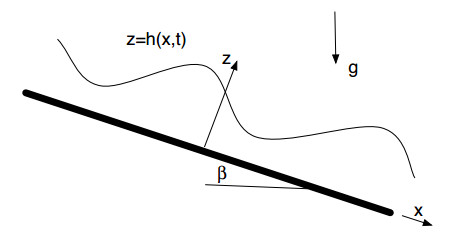
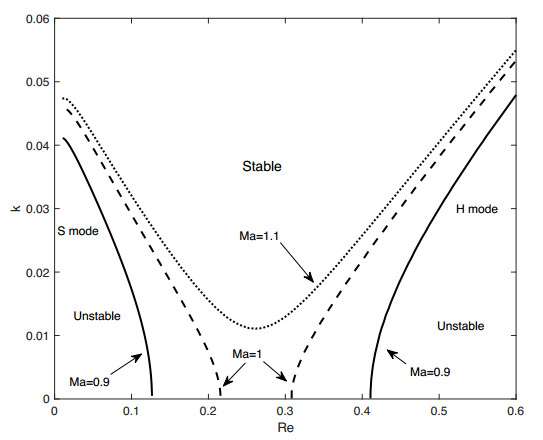
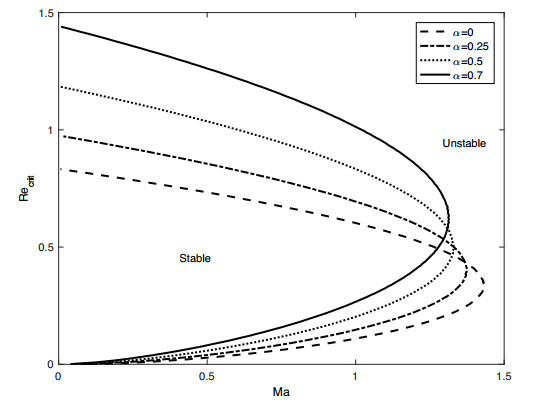
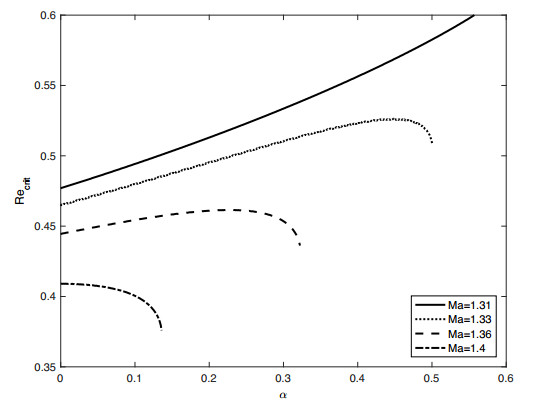
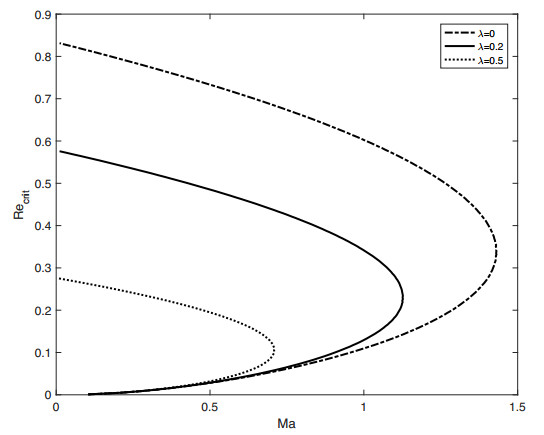
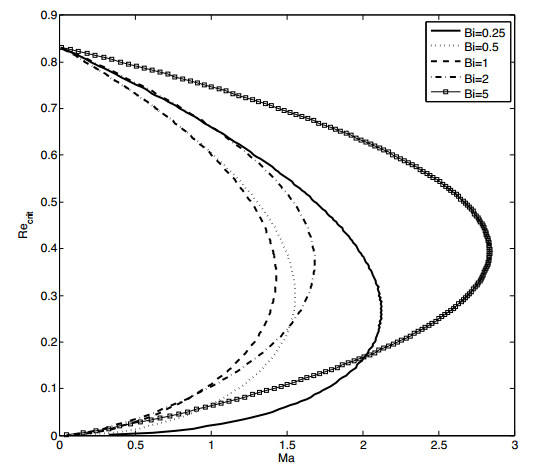
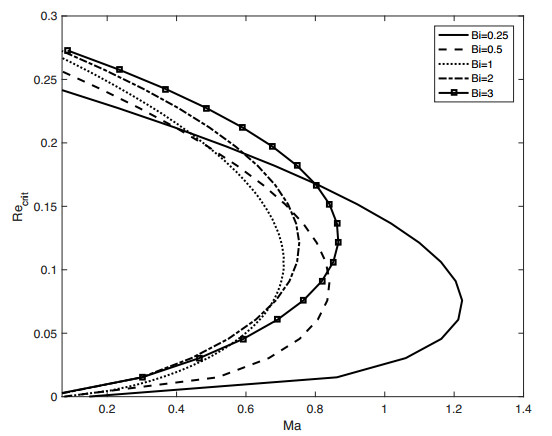
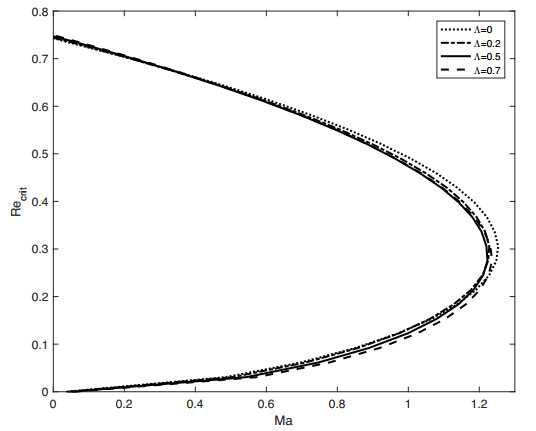
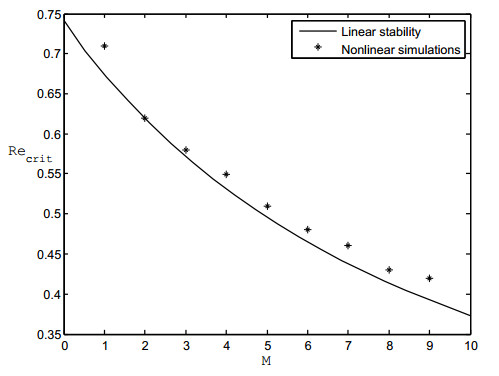


 DownLoad:
DownLoad: